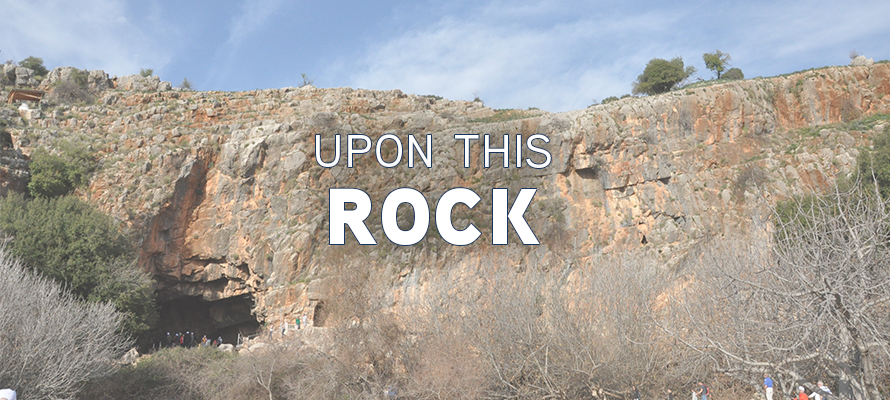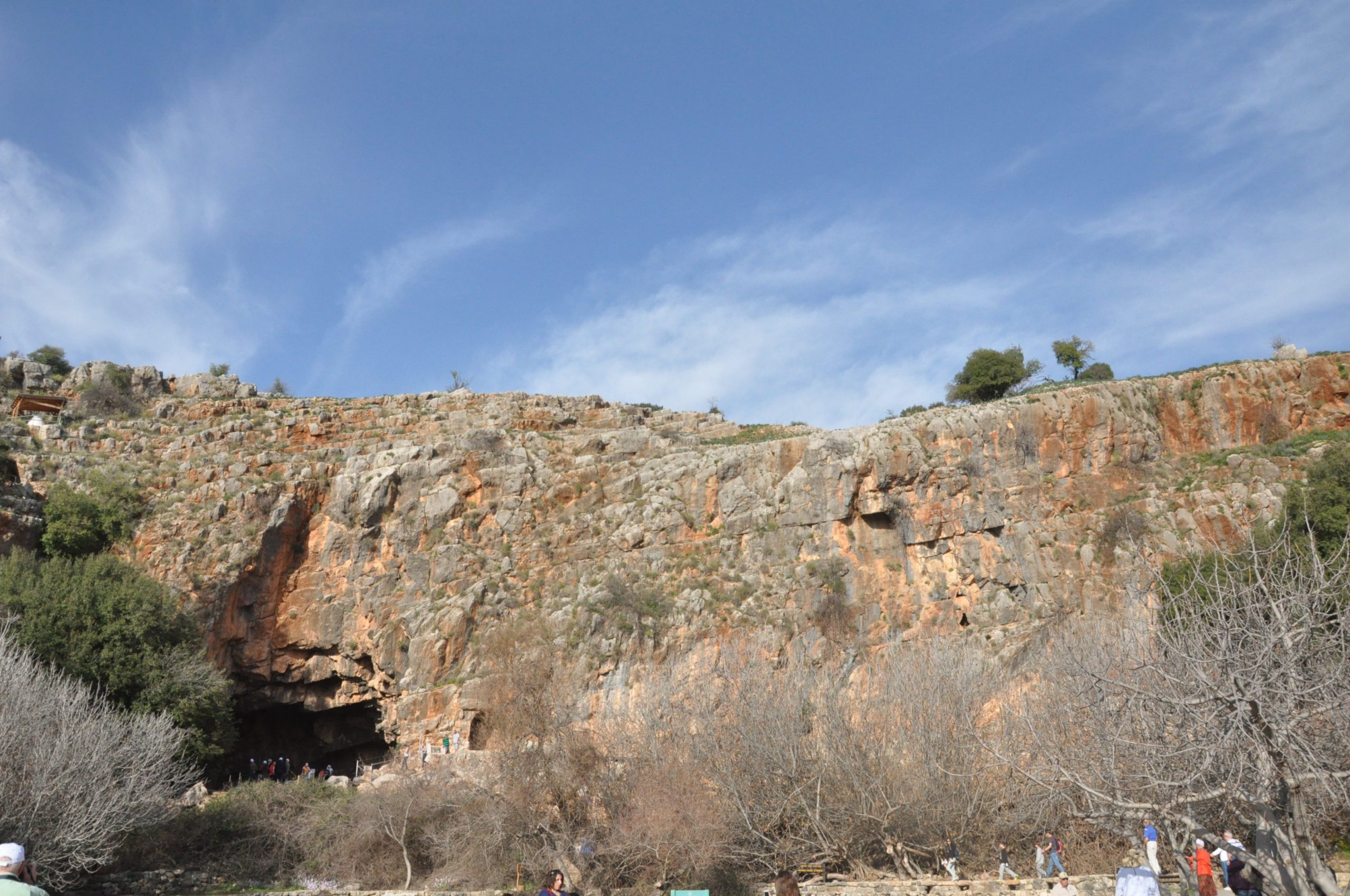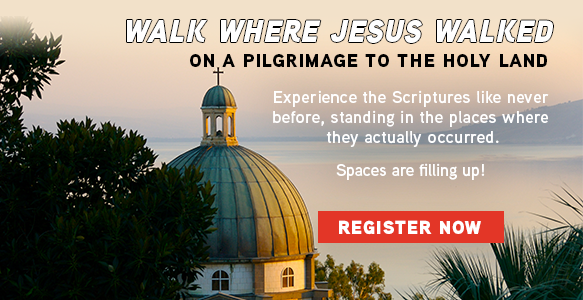Caesarea Philippi and Banias Springs, Golan Heights, Israel

When I made my first pilgrimage to the Holy Land in 2015, I was dubious about the authenticity of some sites on the itinerary. Highest on the list was a visit to Banias Springs—formerly the ancient city of Caesarea Philippi—to see “the rock where Peter declared Jesus to be the Christ.” The site is associated with Mt 16:16-19.
“How could they possibly know the specific rock?” I scoffed, envisioning a boulder about the size of a backyard grill.
Yet seeing this very real “rock” shifted my perception of that Scripture passage and the eternal meaning of Christ’s words regarding his Church: “And I tell you, you are Peter, and on this rock I will build my church, and the gates of Hades will not prevail against it” (Mt. 16:18).
The “rock” is a stone bluff or cliff, roughly 100 feet tall and 500 feet wide. The city of Caesarea Philippi stood atop the bluff in the time of Christ. At the base of part of the stone wall is a cave. Step inside and you can hear an underground river flowing far below. It sounds tranquil. But surrounding that cave in Christ’s time stood a temple to the god Pan where children were thrown to their death into the subterranean water in sacrifice to the pagan deity.
It was in sight of this rock face and temple that the scene of Mt. 16:18 unfolds.
Now, I am fascinated by God’s use of symbolism to reveal Himself and His plan—like Christ, the Bread of Life, being born in Bethlehem, which means “house of bread,” and being laid in a manger, from which lowly creatures would feed.
Christ masterfully employed the same tactic of symbolism in Mt. 16:18. First, he declares the apostle Simon to be “Kephas,” Hebrew for “rock” (“Petros” in Greek). The symbolism of “rock” as something solid makes sense. But to illustrate the enormity of His meaning, Christ makes that statement in sight of the massive expanse of stone spreading before them sturdy enough to support a city. You can almost see Jesus gesturing toward the bluff and the Apostles turning their gazes toward the vast wall of stone topped by Caesarea Philippi.
But, He notes, against this new “rock”—the foundation of the Church Christ would establish through Peter—“the gates of Hades will not prevail.” Again, you can almost see the eyes of the Apostles focus on the temple to Pan, a place of evil where the lives of so many precious little souls were taken. But the words also symbolically foretell of the Church. Imbued with the guidance of the Holy Spirit, no evil will ultimately destroy the one, true Church that Christ founded.
Seeing the “rock” and the temple ruins at Banias Springs, Mt. 16:18 came to life and took on so much more meaning for me.
But then, that’s what a pilgrimage to the Holy Land does—it brings Scripture to life in a real and special way.





